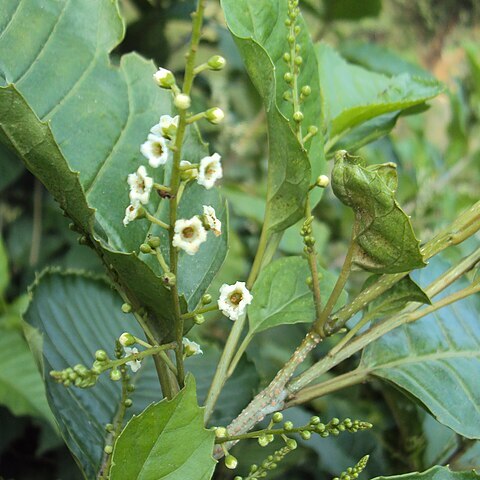Shrubs 1-3 m tall, scandent, glandular granulose, early glabrescent. Branchlets angular to obtusely ridged, pellucid punctate-lineate, striate, with dense lenticels; pith solid. Petiole slightly canaliculate, 1-1.8 cm; leaf blade broadly ovate to oblong, 8-17(-21) × 5-9(-11) cm, papery, punctate-lineate, base obtuse or subrounded, margin serrate-dentate or-denticulate, teeth not callose, apex acute or acuminate. Inflorescences axillary or subterminal, racemose or paniculate, 3-5 cm, glabrescent or glandular granulose; bracteoles broadly ovate, obtuse to rounded apically. Flowers white or light yellow-green, ca. 2 mm. Pedicel 1-2 mm, glandular granulose. Calyx lobes broadly ovate, pellucid punctate, margin entire, sparsely ciliate, apex obtuse to rounded. Corolla campanulate, orange punctate-lineate; lobes broadly ovate, as long as or longer than tube, margin subundulate, apex acute. Stamens inserted at middle of corolla tube, included; filaments as long as or longer than anthers; anthers rounded. Pistil included. Style short; stigma lobed. Fruit globose or subglobose, ca. 3 mm in diam., with longitudinal ribs; persistent calyx lobes closed at fruit apex. Fl. Apr-May, fr. Sep-Nov.
More
A shrub. It grows 1-3 m tall. The young branches have hairs. They are angular. The leaf stalk is 1-1.8 cm long. The leaf blade is 8-17 cm long by 5-9 cm wide. It is papery. There are teeth along the edge. The flowers are in the axils of leaves or near the ends of branches. The flowers are white or light yellow. They are about 2 mm across. The fruit is round. The fruit are 2.5 mm across. It has ribs along it.


